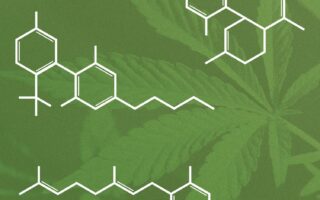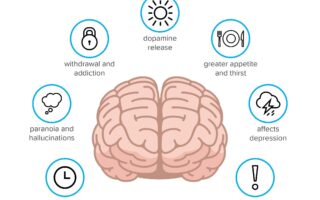In the world of substances and their impact on society, few terms evoke as much curiosity and concern as “crack.” This powerful derivative of cocaine has carved a complex narrative, interwoven with themes of addiction, urban culture, and the ongoing struggle for public health. But what exactly is crack, and how does it differ from its parent substance? As we peel back the layers of this topic, we will explore its chemical composition, the socio-economic factors that contribute to its prevalence, and the multifaceted implications of its use. Join us on a journey that seeks to illuminate the shadows of misunderstanding, presenting a balanced view of crack—not just as a drug, but as a phenomenon shaped by and shaping the world around it.
Table of Contents
- Understanding Crack: The Substance and Its Effects
- The Journey to Addiction: How Crack Alters the Brain
- Navigating Recovery: Effective Approaches to Overcome Crack Dependence
- Supporting Loved Ones: Strategies for Compassionate Intervention
- Q&A
- In Retrospect
Understanding Crack: The Substance and Its Effects
Crack cocaine is a powerful stimulant that is derived from powdered cocaine through a chemical process involving baking soda and water. This transformation results in the formation of solid, crystalline chunks or rocks that can be smoked. The name “crack” comes from the cracking sound produced when the substance is heated. Once consumed, it delivers an intense and rapid euphoric high due to its ability to quickly cross the blood-brain barrier. Users often experience a heightened sense of energy, alertness, and increased confidence. However, its effects are short-lived, prompting many users to seek additional doses to prolong the high.
The consequences of crack use extend beyond the immediate euphoric effects and can result in significant physical and psychological ramifications. Users may face a variety of health issues, including:
- Cardiovascular problems: Increased heart rate and blood pressure.
- Respiratory issues: Lung damage resulting from frequent smoking.
- Mental health challenges: Heightened anxiety, paranoia, and potential for addiction.
Moreover, the cycle of addiction leads to social and economic repercussions that can affect not only the individual but also their community. Understanding these facets of crack cocaine is crucial in addressing the broader challenges associated with its use.
The Journey to Addiction: How Crack Alters the Brain
The influence of crack cocaine on the brain is profound and complex, beginning at a molecular level and extending to significant behavioral shifts. When smoked, crack delivers an intense high almost instantaneously, creating a euphoric rush that dramatically increases dopamine levels, a neurotransmitter that plays a key role in pleasure and reward. This sudden surge fosters an overwhelming desire to repeat the experience, leading to compulsive behavior. Over time, chronic use disrupts the brain’s natural ability to produce dopamine, leaving the user reliant on the drug to achieve feelings of pleasure. This cycle not only alters mood and perception but actively rewires the brain’s reward system itself.
The alterations brought on by crack are not just chemical; they are deeply psychological as well. Users may experience a blend of emotional highs and lows, often falling into a pattern of addiction that spirals out of control. Some common effects on behavior and cognition include:
- Increased tolerance – Users require more of the substance to achieve the same euphoric effects.
- Withdrawal symptoms – Physical and emotional disturbances that occur when not using the drug.
- Impaired judgment – A reduced ability to make rational decisions.
- Heightened anxiety – Increased feelings of paranoia or distress when not high.
Long-term impacts can be devastating, as users may prioritize drug-seeking behavior over essential life responsibilities and relationships. A quick comparison of brain function before and after extended crack use illustrates the severity of these changes:
| Brain Function | Before Crack Use | After Extended Use |
|---|---|---|
| Dopamine Production | Normal natural levels | Significantly reduced |
| Cognitive Ability | Focused and rational | Impaired decision-making |
| Emotional Regulation | Stable mood | Severe mood swings |
Navigating Recovery: Effective Approaches to Overcome Crack Dependence
Recovering from crack dependence involves a multifaceted approach that addresses both the psychological and physiological aspects of addiction. Therapeutic interventions, such as cognitive-behavioral therapy (CBT) and motivational interviewing, play a crucial role in helping individuals understand the triggers associated with their use. These therapies empower individuals to develop coping strategies and reframe negative thought patterns. Moreover, integrating support groups such as Narcotics Anonymous provides an essential social element to recovery, fostering a sense of community and belonging that is instrumental in maintaining sobriety.
In addition to therapy and support groups, the role of medication-assisted treatment cannot be understated. While there are currently no FDA-approved medications specifically for treating crack addiction, certain medications can alleviate withdrawal symptoms and reduce cravings. A combination of lifestyle changes, including nutritious diets, physical activity, and mindfulness practices, also contribute to holistic recovery. The journey is personal and often requires tailoring approaches to fit individual needs, but with persistence and support, overcoming crack dependence is an achievable goal.
Supporting Loved Ones: Strategies for Compassionate Intervention
When it comes to supporting loved ones struggling with addiction, particularly with substances like crack cocaine, having compassionate strategies in place can make a tremendous difference. It begins with open communication, which involves actively listening to their concerns and feelings without judgment. This builds trust and allows for a genuine connection. You might consider these approaches:
- Educate Yourself: Understand the nature of addiction and its effects. This knowledge helps you empathize and relate to their struggles.
- Offer Non-judgmental Support: Create a safe space for open dialogue. Avoid blame and express your care.
- Encourage Professional Help: Suggest therapy or support groups while respecting their readiness to seek help.
- Set Boundaries: Protect your own well-being by establishing clear boundaries regarding what you are willing to support.
Additionally, creating a plan for intervention can be instrumental if your loved one is open to the idea. An effective intervention is not just about confronting the individual but rather framing it as a collective concern from family and friends. Consider the following steps:
| Step | Description |
|---|---|
| Gather Information | Collect resources on treatment options and recovery programs. |
| Select a Time | Choose a moment free from distractions to ensure an impactful conversation. |
| Be Honest | Express your feelings and observations without generalizations. |
| Outline Consequences | Clarify the impact of their addiction on your relationship and set future expectations. |
Q&A
Q&A: Understanding Crack
Q1: What exactly is crack?
A1: Crack is a potent, crystalline form of cocaine that has been processed to make it smokable. Unlike traditional powdered cocaine, which is often snorted, crack is typically heated and inhaled, producing an intense and immediate euphoric effect. The name “crack” comes from the cracking sound it makes when heated.
Q2: How is crack made?
A2: Crack is created by mixing powdered cocaine with a solution of water and a strong base, such as baking soda. This mixture is then heated, causing it to solidify into hard “rocks.” These rocks can be broken down into smaller pieces for use. This method of production not only enhances the drug’s potency but also makes it more accessible due to its lower cost compared to powdered cocaine.
Q3: What effects does crack have on the body?
A3: When smoked, crack delivers a rapid and intense high that can last anywhere from 5 to 30 minutes. Users often experience heightened feelings of euphoria, energy, and confidence. However, the high is short-lived, leading many to crave more, which can result in addictive behavior. Side effects can include increased heart rate, agitation, and paranoia, and long-term use may lead to severe health complications.
Q4: Why is crack considered so dangerous?
A4: The dangers of crack stem not only from its addictive nature but also from its method of consumption. Smoking crack can lead to damage in the lungs and respiratory system, while its impact on the brain can result in neurological impairment and mental health issues. Additionally, the drug is often associated with crime and social instability, further complicating its effects on individuals and communities.
Q5: What is the relationship between crack and addiction?
A5: Crack has a high potential for addiction due to the rapid onset of its euphoric effects. Users may quickly develop a tolerance, needing larger doses to achieve the same high, which can lead to compulsive drug-seeking behavior. Treatment for crack addiction often requires a multifaceted approach that includes therapy, support groups, and sometimes medication to help manage withdrawal symptoms.
Q6: Are there any social implications related to crack use?
A6: Yes, the crack epidemic has had significant social implications, particularly in certain communities. It has been associated with increased crime rates, poverty, and racial disparities in the criminal justice system. Discussions around crack often touch on issues of stigma and the need for comprehensive addiction treatment rather than punitive measures, advocating for a public health approach to substance abuse.
Q7: How can one find help if they or someone they know is struggling with crack addiction?
A7: Help is available through various resources, including hotlines, addiction treatment centers, and support groups such as Narcotics Anonymous. It’s crucial for individuals struggling with addiction to seek professional assistance to address both the physical and psychological aspects of their dependency. Reaching out to healthcare providers or counselors can be a vital first step in the journey toward recovery.
In Retrospect
the exploration of crack realigns our understanding of its multifaceted nature. Beyond the stark statistics and societal implications, crack is a substance intertwined with stories of struggle, resilience, and complex human experiences. As we navigate the discussions surrounding addiction, it’s crucial to approach the topic with empathy and awareness, recognizing both the individual and collective challenges it poses. By fostering informed conversations and embracing a holistic view, we can contribute to a more compassionate approach to public health and social justice. Understanding “what is crack” is not merely an academic inquiry; it’s a step toward bridging gaps in knowledge, igniting dialogues, and ultimately working toward a more supportive society for all those affected by its reach.



